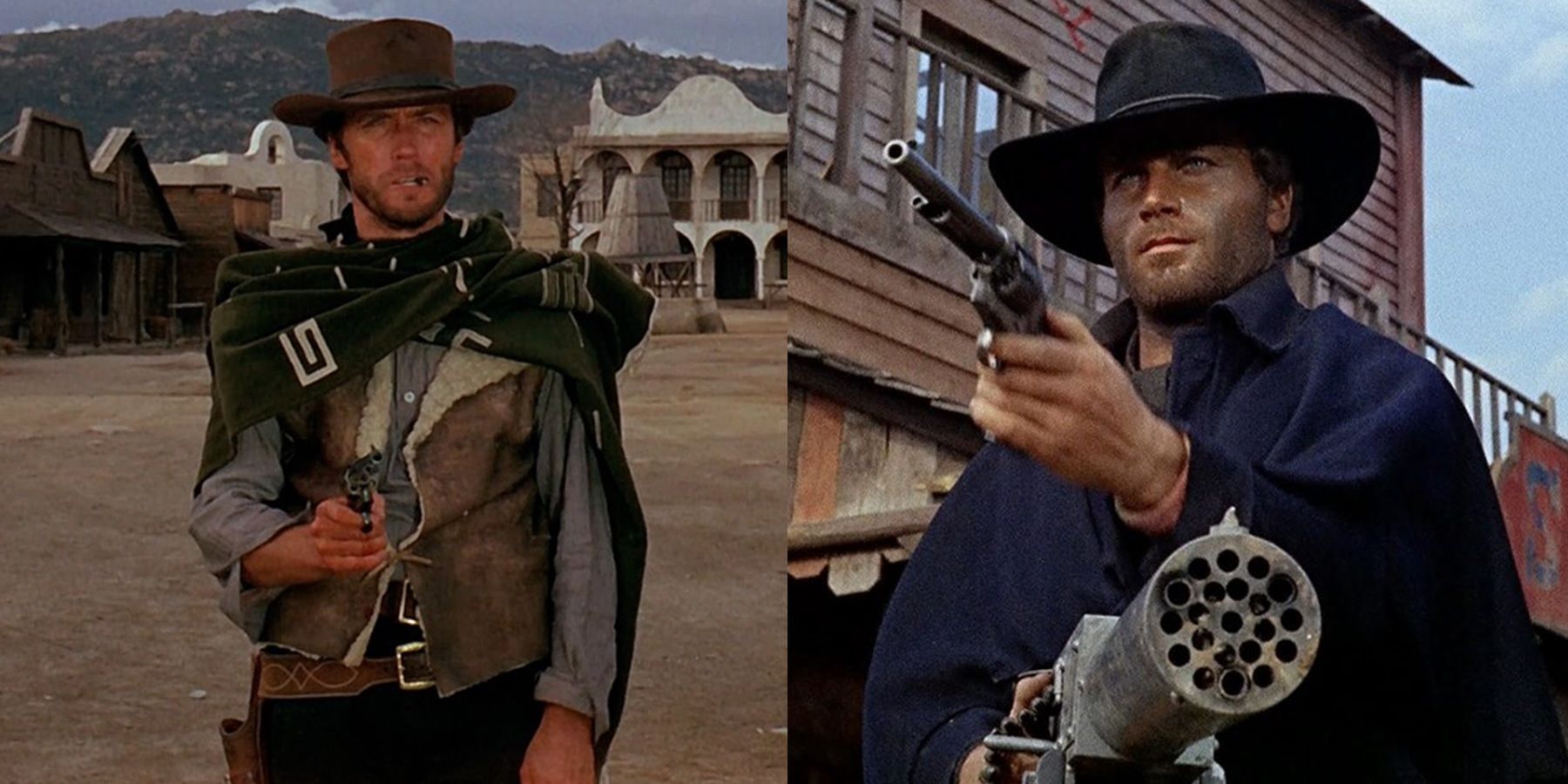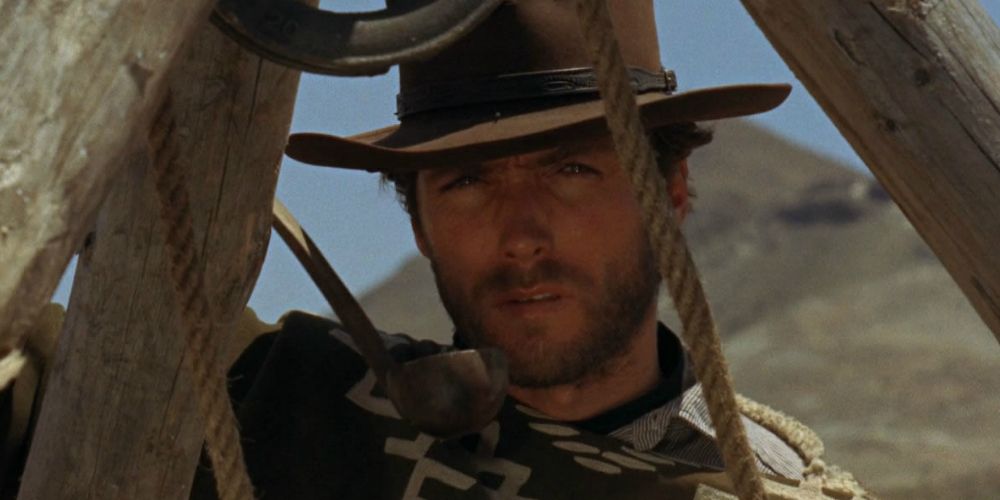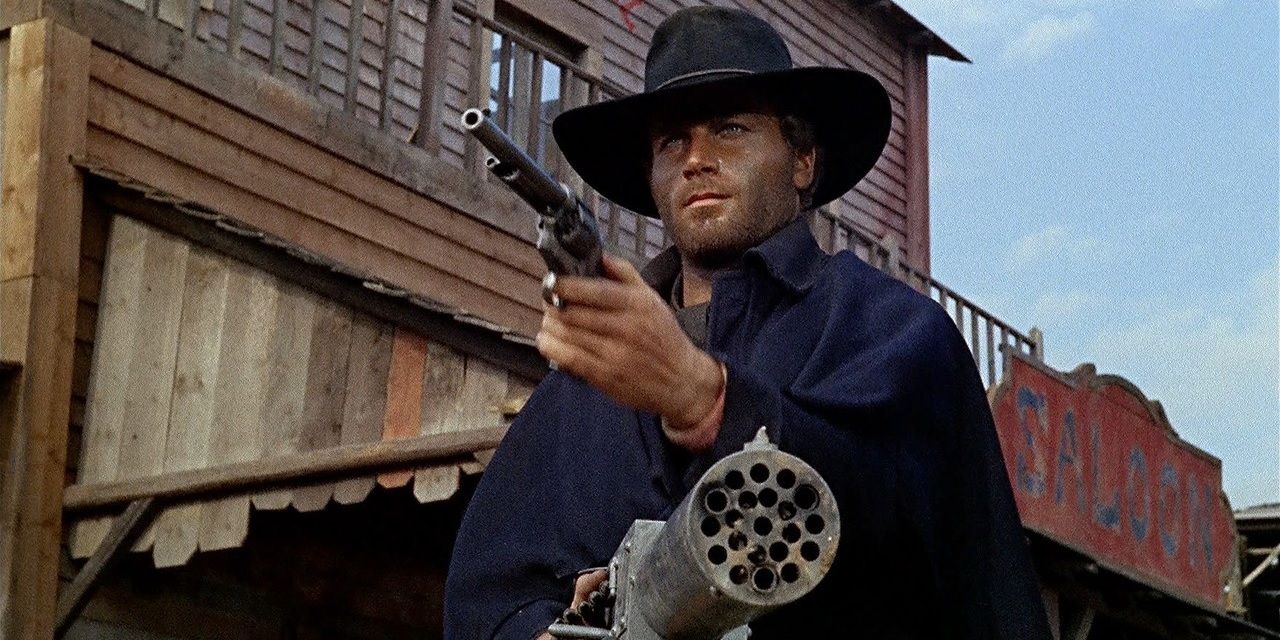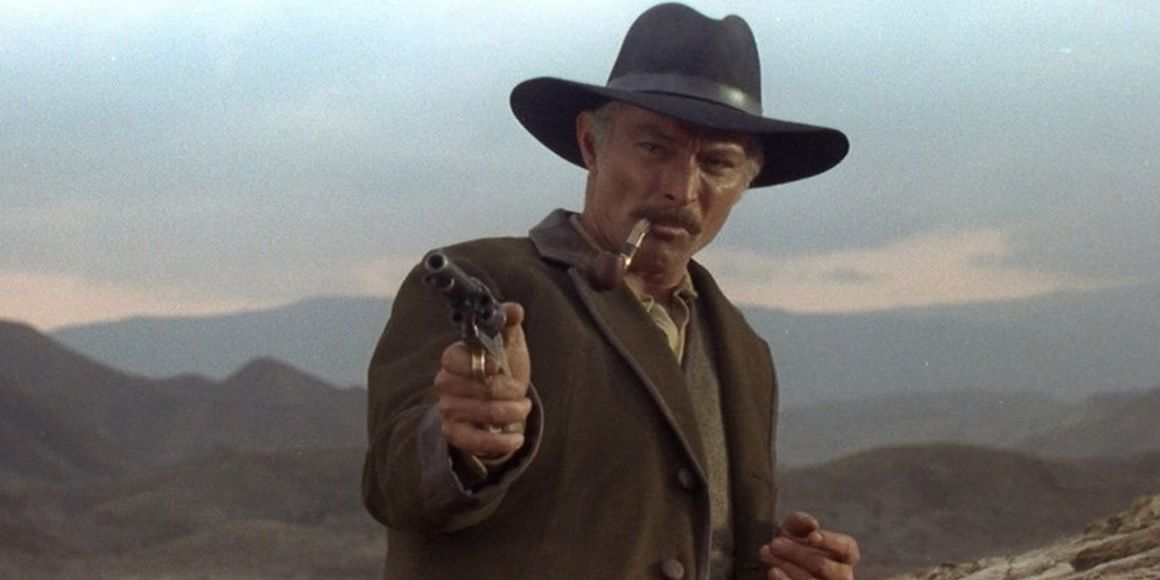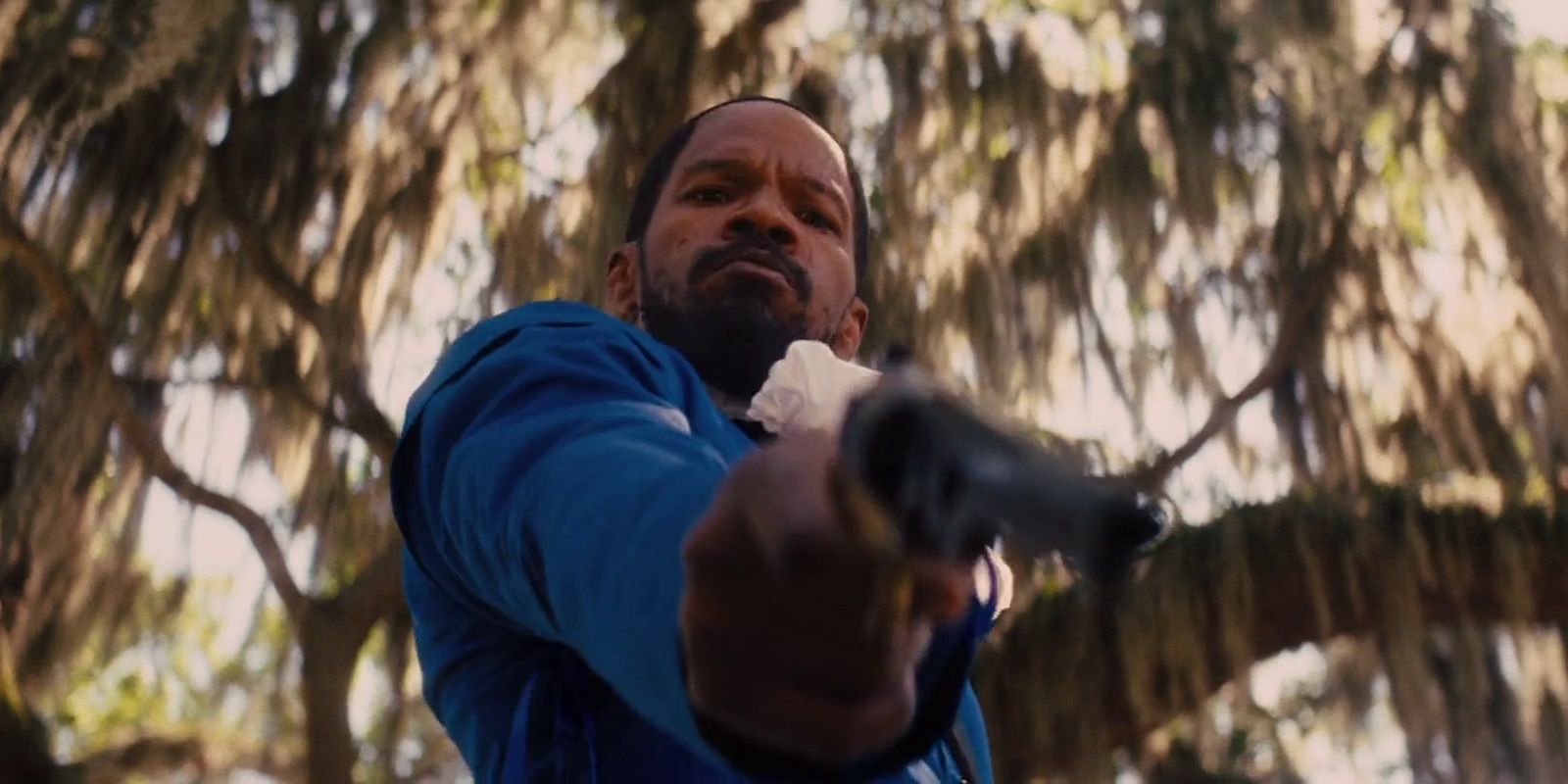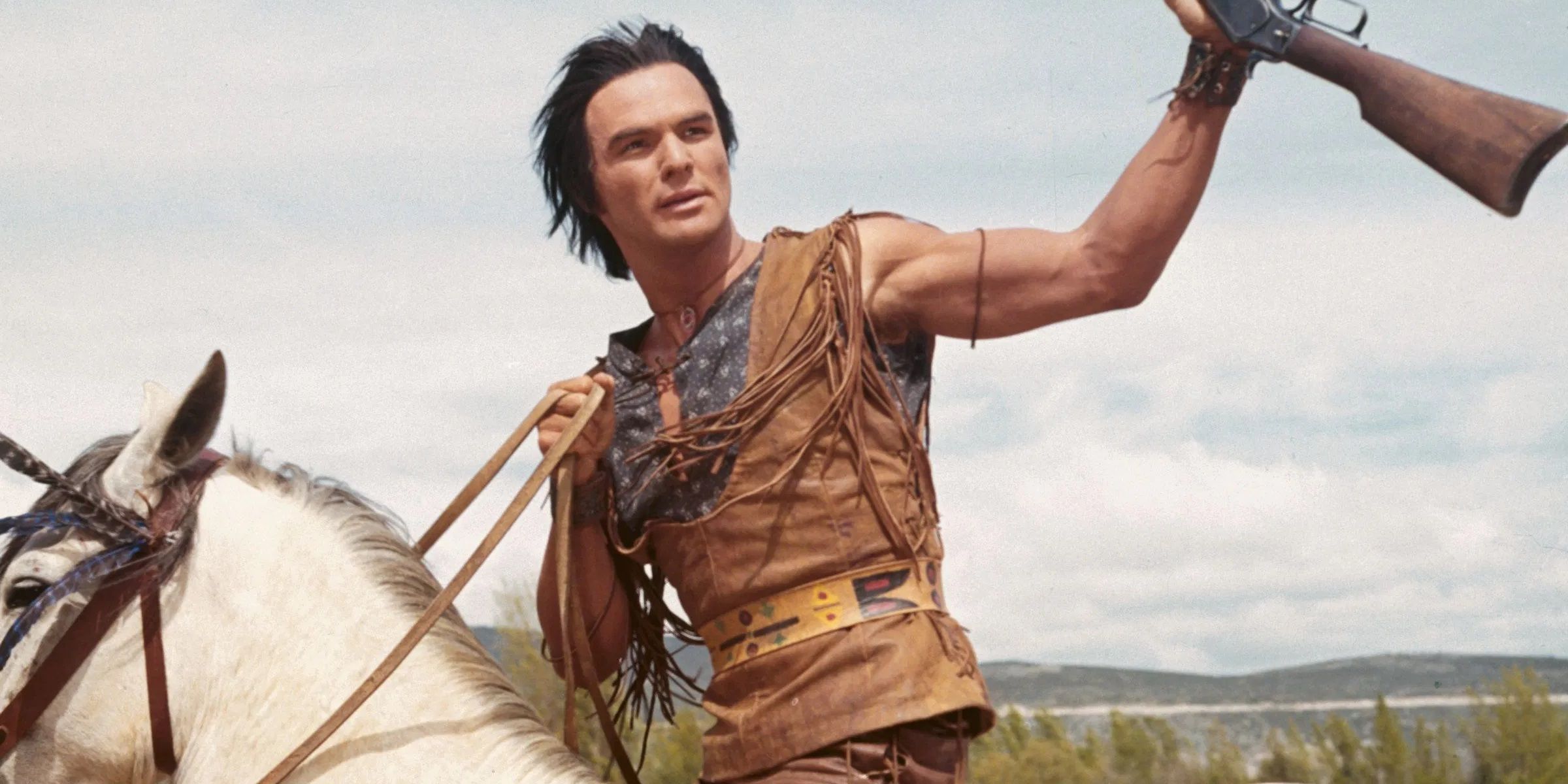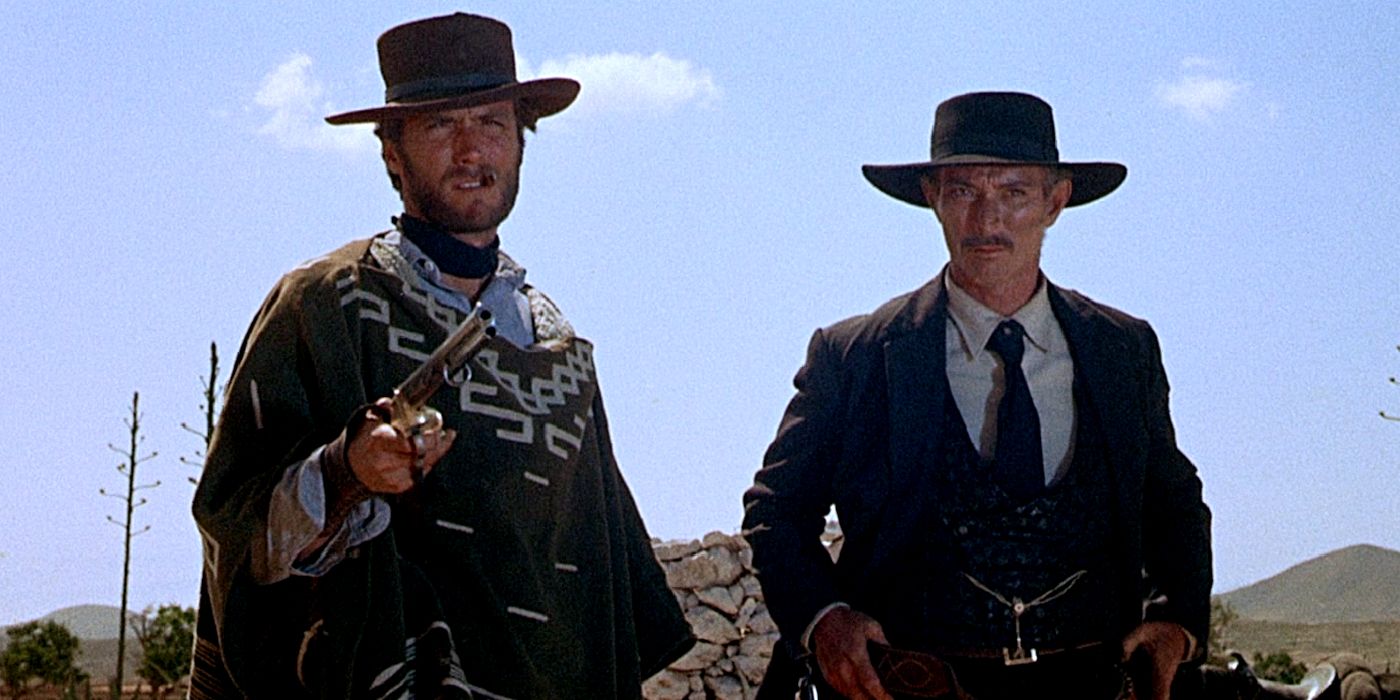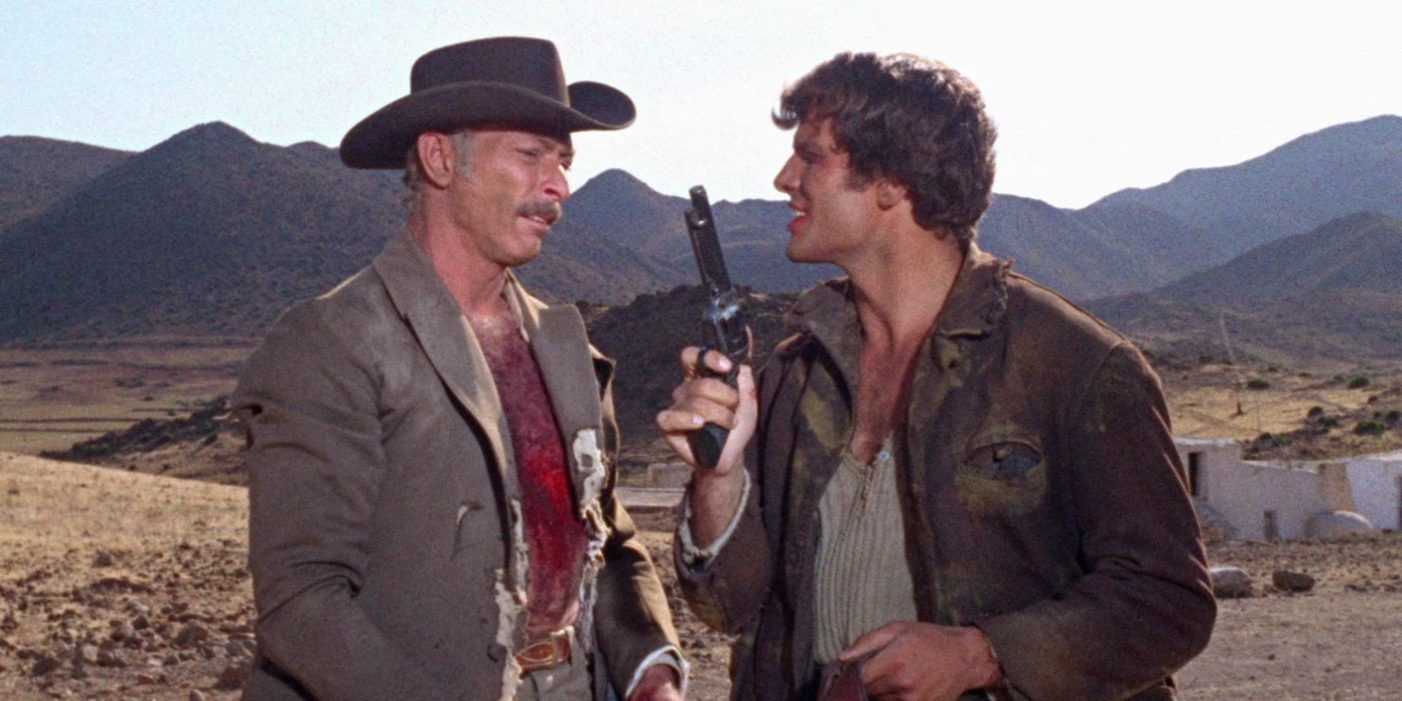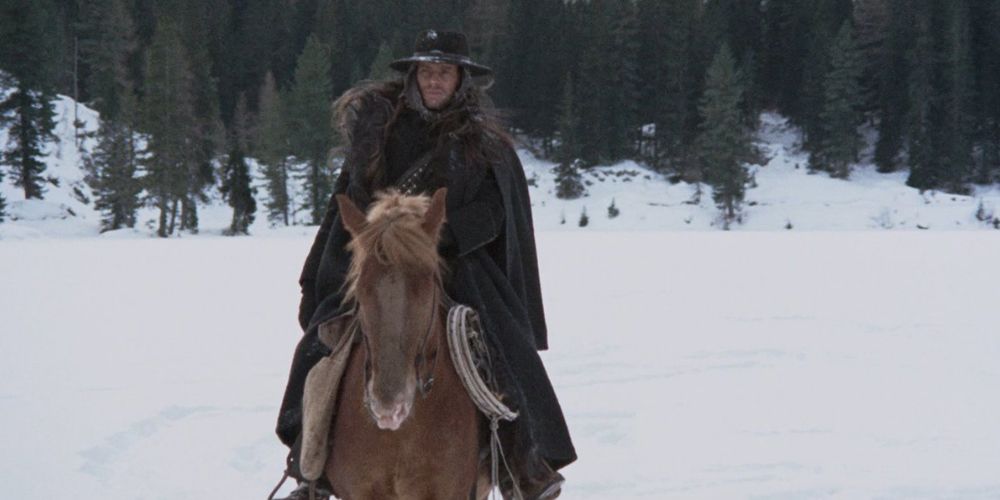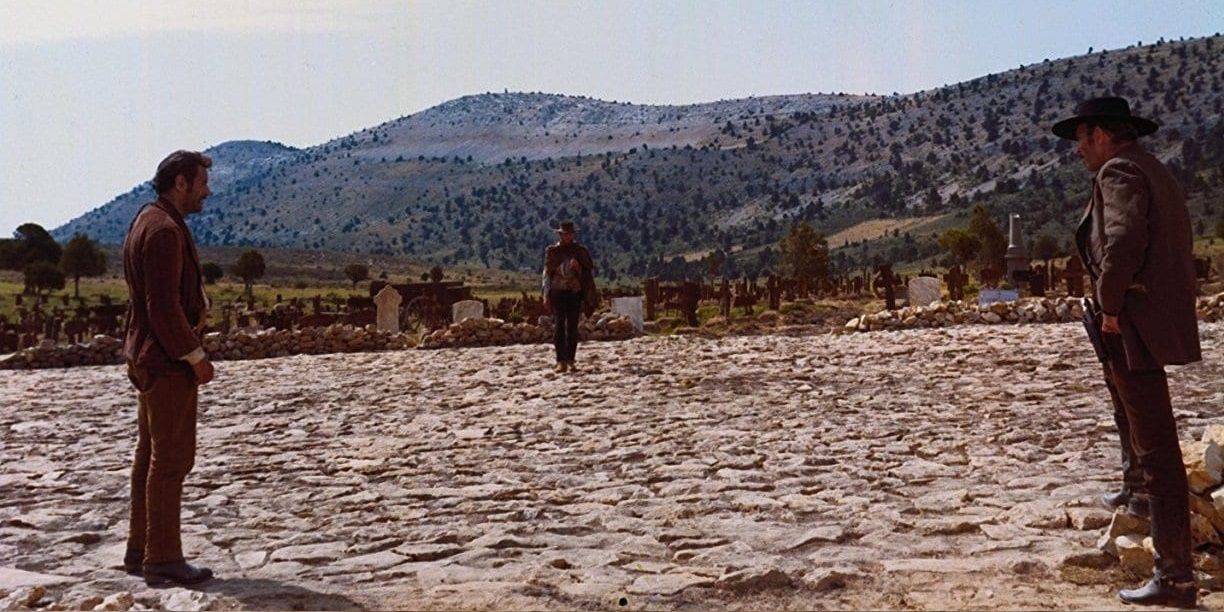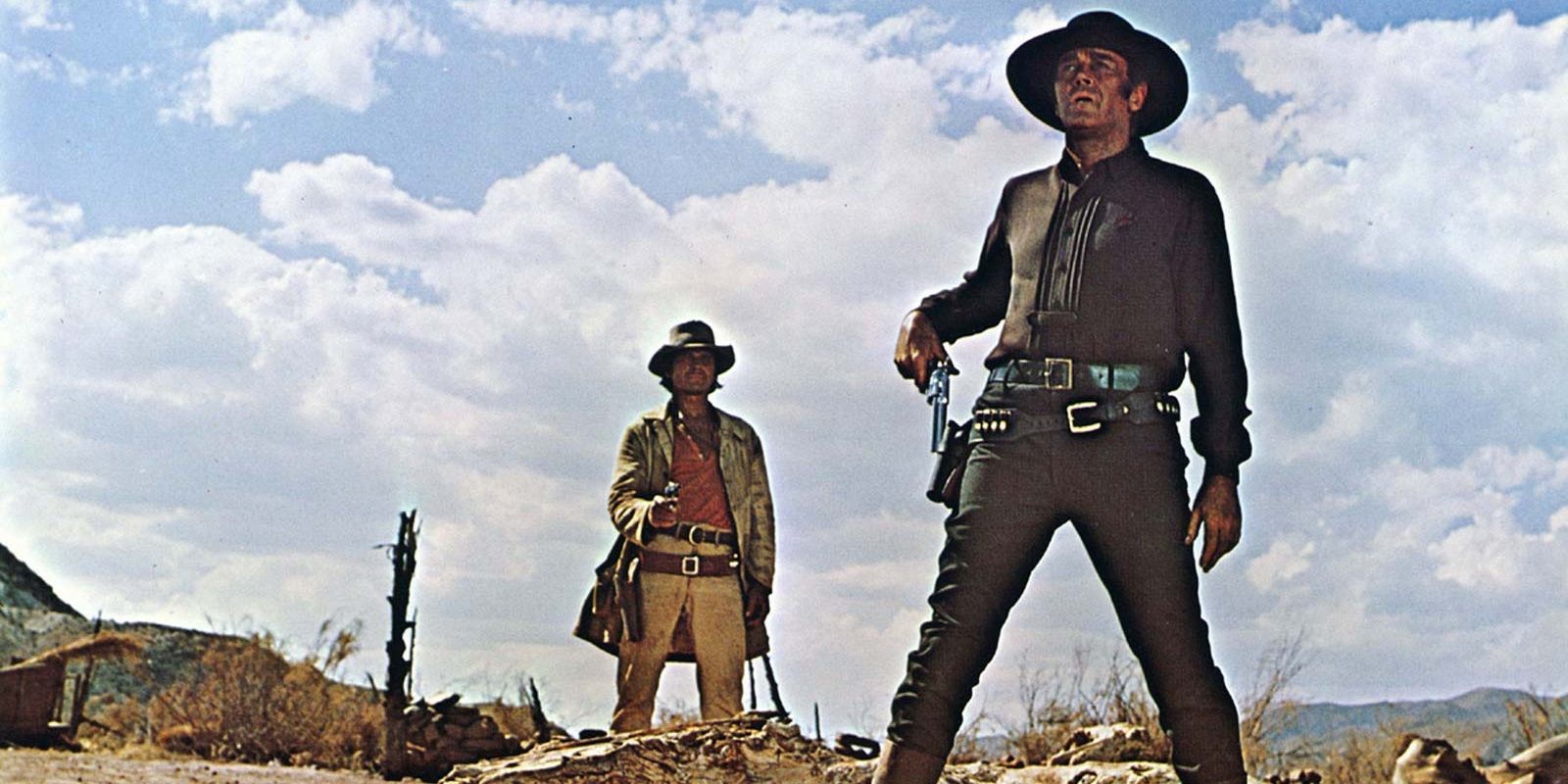There are many subsections of the western genre, from neo-westerns like No Country for Old Men to acid westerns like El Topo to anti-westerns like McCabe and Mrs. Miller. One of the most popular is the spaghetti western. Literally, a spaghetti western describes a western made by an Italian filmmaker, but the style is defined by certain qualities.
As seen in Sergio Leone’s seminal masterpiece A Fistful of Dollars, spaghetti westerns exhibit more brutal violence than traditional entries in the genre, as well as a bleaker view of life in the Old West that takes a peek behind the well-worn, whitewashed myths.
A Fistful Of Dollars (1964)
Sergio Leone essentially defined the spaghetti western with his 1964 classic A Fistful of Dollars, which expertly reimagines Akira Kurosawa’s samurai masterpiece Yojimbo in a Wild West setting.
Clint Eastwood stars as the Man with No Name, a role he would go on to reprise twice more for Leone, a drifter who arrives in a town caught in the middle of a gang dispute and singlehandedly settles the conflict and brings peace back to the townspeople. It’s a quintessential western story.
Django (1966)
Much like A Fistful of Dollars, Sergio Corbucci’s Django loosely remade Yojimbo in a western setting to emulate the success of Leone’s movie. What set this one apart was its title character, who carries around a mysterious coffin and desperately wants to avenge the love of his life, Mercedes Zaro, who was killed by the sinister Major Jackson, one of the most hateable villains in the genre.
While the basic plot is the same as Fistful’s, the uniqueness of the Django character paired with Franco Nero’s iconic performance cemented Corbucci’s movie as its own beast.
Death Rides A Horse (1967)
In the opening scene of Death Rides a Horse, a young boy watches helplessly as a gang of bandits storm his family’s homestead, kill his father, and sexually assault and murder his sister and mother. That boy spends the next 15 years training to track down the gang and kill its members one by one.
Director Giulio Petroni sets up the revenge premise efficiently, then gives the kid a rough-around-the-edges sidekick played by Lee Van Cleef and uses each vengeful kill to build toward a shocking twist that significantly raises the stakes.
Django Unchained (2012)
After referencing spaghetti westerns throughout his entire filmography, Quentin Tarantino finally tried his hand at the genre for his seventh feature, Django Unchained. The writer-director determined that the same techniques Leone and Corbucci used to expose the ugliness in the Old West could be used to highlight the ugliness in the antebellum South.
While the use of spaghetti western iconography to depict American slavery was understandably controversial, Tarantino’s movie is a satirical masterpiece filled with powerful performances and satisfying revenge fantasies.
Navajo Joe (1966)
Tarantino has named Sergio Corbucci’s brutal cult classic Navajo Joe as a major influence on Django Unchained’s antebellum-era revenge fantasies. It tells the story of the sole survivor of the massacre of a Native American tribe seeking revenge against the band of scalp hunters responsible.
Like Al Pacino’s casting as a Cuban immigrant in Scarface, Burt Reynolds’ casting as a Native American warrior in Navajo Joe has aged poorly, but the movie’s historical revenge fantasy holds up in the era of Tarantino revisionism.
For A Few Dollars More (1965)
After the success of A Fistful of Dollars, Sergio Leone and Clint Eastwood reteamed for a sequel, For a Few Dollars More, which changed up the premise by giving Manco a sidekick in the form of Lee Van Cleef’s Colonel Douglas Mortimer, a soldier-turned-bounty hunter.
There’s a big bounty available since a notorious bank robber was broken out of jail by his gang, and since they’re both too stubborn to back down, they reluctantly decide to work together.
Day Of Anger (1967)
In Tonino Valerii’s Day of Anger, an infamous gunslinger takes a lowly garbage boy under his wing and teaches him to shoot. Later, he needs to use these lessons against his teacher when the gunfighter loses his mind and takes the boy’s town hostage.
Like Death Rides a Horse, Day of Anger subverts the tropes of mentor-mentee relationships seen in westerns. In both cases, a gunslinger’s protégé turns on them after learning about their true nature.
The Great Silence (1968)
Sergio Corbucci conceived The Great Silence as a response to the deaths of Malcolm X and Che Guevara. The story takes place just before the Great Blizzard of 1899 and sees a gunfighter who never speaks taking on a band of vicious bounty hunters and a crooked banker on behalf of some outlaws and a widow seeking revenge.
Most spaghetti westerns were shot in Spain’s Almería province to double for the American West, but Corbucci took production of The Great Silence to the Italian Dolomites.
The Good, The Bad, And The Ugly (1966)
Every entry in Leone’s Dollars trilogy is an essential spaghetti western. As both a mesmerizing cinematic spectacle and a satirical critique of its genre, The Good, the Bad, and the Ugly is a true masterpiece. It builds to a breathtaking finale and refuses to sanitize the violent ugliness of history along the way.
From “The Ecstasy of Gold” to the main title theme, The Good, the Bad, and the Ugly has one of Ennio Morricone’s most memorable scores.
Once Upon A Time In The West (1968)
Sergio Leone planned to retire from the western genre after helming The Good, the Bad, and the Ugly, but returned for one last foray into the Wild West (which ended up becoming two last forays) when he was given the opportunity to work with his childhood idol, Henry Fonda. Leone cast Fonda radically against type. After years of playing clean-cut heroes, Fonda took on the role of a sadistic child-murdering gunslinger in Once Upon a Time in the West.
In constructing the script for Once Upon a Time in the West, Leone and his co-writers watched a western movie marathon and combined all the moments and characters and elements they loved from the genre into a sprawling epic that acts as both a love letter to the genre and a bittersweet swansong marking the end of its heyday.

